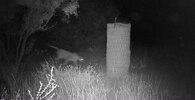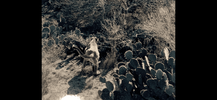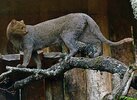Jumping the gun a bit as off-season & bit early. Prospects/outlook for Sako field exercises in our country (S Tx) report.
Out of 3-4 year drought as El Niño did bring spring rains which help with fawning as most born in first 10 days of July & high grasses help against predators & cooler in shade as trees limbs full. A large contributor to antler growth are mesquite beans & currently the best crop I’ve seen in 10 years. Deer do not have to travel to eat as the trees & ground covered with them. Scientific estimates for dense mature trees bean pods yield is 4,000 to 10,000 kg per hectare. On the low side it would be ~8,800 lbs per acre. Photos show blooms, green & mature bean pods. Nutrition estimates attached & great for lactation & bigger fawns for the future as a great head start. I’ve seen 3-4 different crop yields over April thru September in past affected by summer rains (a prayer here).
So, my prediction is that 2023-2024 season may be one of the best ever. Enthusiasm abounds in anticipation.
I’d be sighting a few Sako rifles in now but the high humidity & temps from 105-116F is miserable & can wait.


Out of 3-4 year drought as El Niño did bring spring rains which help with fawning as most born in first 10 days of July & high grasses help against predators & cooler in shade as trees limbs full. A large contributor to antler growth are mesquite beans & currently the best crop I’ve seen in 10 years. Deer do not have to travel to eat as the trees & ground covered with them. Scientific estimates for dense mature trees bean pods yield is 4,000 to 10,000 kg per hectare. On the low side it would be ~8,800 lbs per acre. Photos show blooms, green & mature bean pods. Nutrition estimates attached & great for lactation & bigger fawns for the future as a great head start. I’ve seen 3-4 different crop yields over April thru September in past affected by summer rains (a prayer here).
So, my prediction is that 2023-2024 season may be one of the best ever. Enthusiasm abounds in anticipation.
I’d be sighting a few Sako rifles in now but the high humidity & temps from 105-116F is miserable & can wait.



Last edited:





